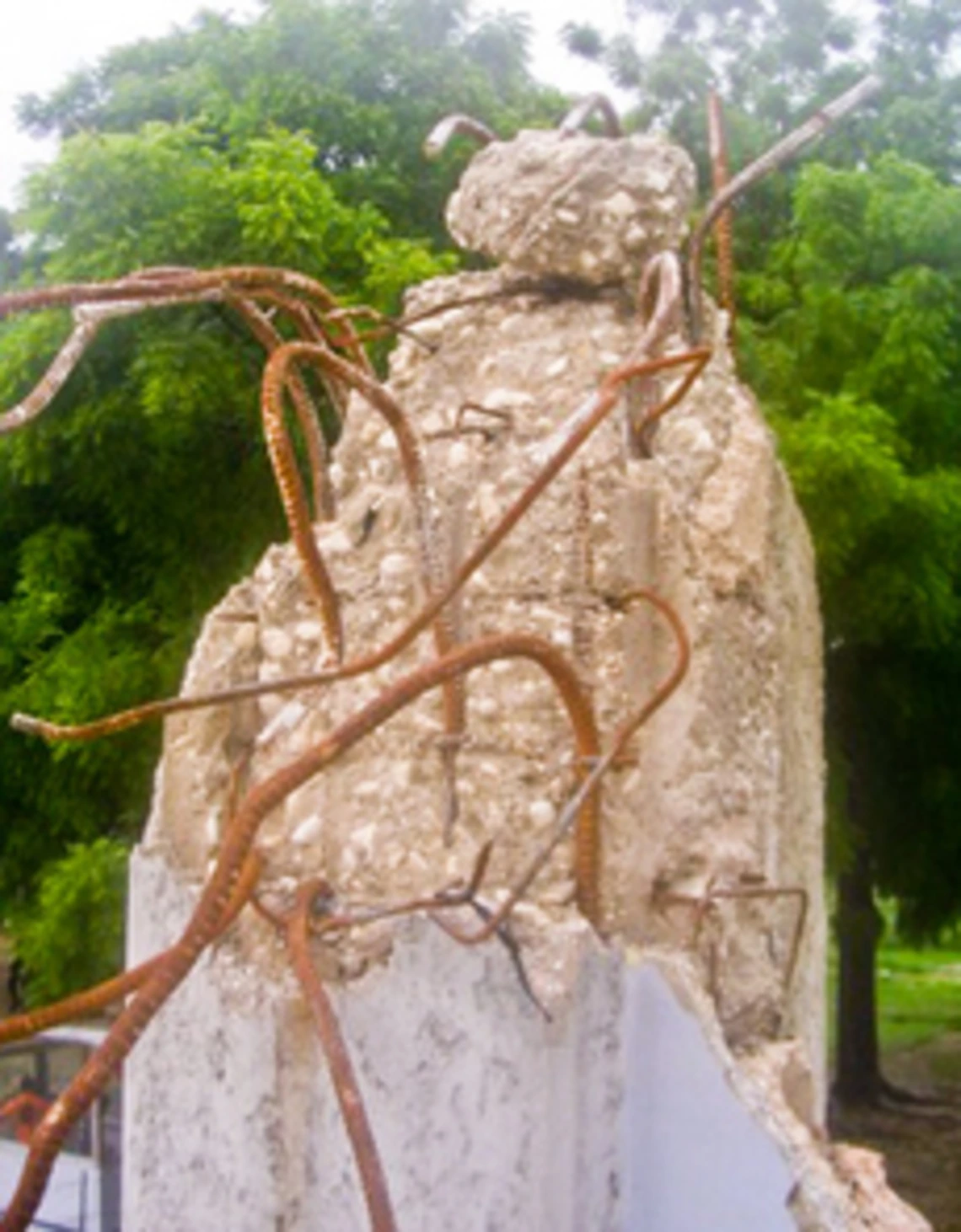UA Engineering Leads Haiti Earthquake Survey Team

Article taken from the College of Engineering website and may be found here.
A team led by University of Arizona earthquake engineer Robert B. Fleischman, associate professor in the UA department of civil engineering and engineering mechanics, traveled to Haiti in 2010 to examine earthquake damage to buildings in Port-Au-Prince.
The magnitude 7.0 earthquake struck Haiti around 5 p.m. on Jan. 12, 2010. In just 30 seconds, nearly a quarter of a million people died. A further 300,000 were injured, and more than a million people were displaced. The primary cause of loss of life was the collapse of nearly 100,000 buildings constructed mostly of reinforced concrete or unreinforced masonry.
Fleischman's team consisted of UA faculty and graduate students, and engineers from Rutherford & Chekene, a San Francisco earthquake engineering firm. The trip was funded by the National Science Foundation under its Rapid Response Program to gather perishable data in the period directly after a natural disaster.
The team documented engineered structures in Port-Au-Prince that suffered heavy damage but did not collapse. The term "engineered" refers to construction that involved engineers or architects, as opposed to construction carried out by building owners or community members. "Most residential homes in Haiti fall into this latter category," Fleischman said.
The team also evaluated techniques for seismic assessment of vulnerable structures, and recommended improvements to building practices in Haiti.
"The situation in Haiti is complex and dire," Fleischman said with regard to Haitian building practices. "Solutions -- structural and otherwise -- that would be straightforward in the U.S. do not translate to Haiti."
This is due to lack of, among other things, sufficient funds, appropriate materials, engineering knowledge, building codes, and quality control. "For many citizens," Fleischman said, "the conditions with regard to quality of life before the earthquake were already extremely severe."
The research team focused their efforts in Port-Au-Prince, where approximately 20 percent of structures collapsed. The buildings they examined were selected from a short list of damaged engineered buildings that included hospitals, schools, hotels, banks, office buildings, government buildings, and churches.
The UA team analyzed the damage to this nine-story office building and created a computer model of it, which they used to estimate how the ground moved during the earthquake.
Criteria for selection included location, access, safety, availability of blueprints, and accessibility to the engineer or architect of record. The buildings selected were a school cafeteria, a two-story classroom, a campus church, a four-story multipurpose educational building, and a nine-story office building.
The team documented the structural damage using digital still images and video, voice recording, and written observations. The team recorded the level, extent and pattern of damage within each structure, and surveyed them for key dimensions, because existing building plans were not always complete. This information was used to create graphical damage maps of each structure.
The UA team created computer-based structural models of the damaged buildings, and estimated how the ground moved during the earthquake. These models and estimates were then used to create computer simulations that could determine building stability and inform revisions to building practices.
"We used information from multiple sources to build the computer simulations," Fleischman said, "including field measurements, structural plans, discussions with Haitian engineers and architects, the U.S. Geological Survey, and other researchers testing Haitian building materials."
Fleischman said a big challenge was estimating how the ground moved during the earthquake. "No seismographs were deployed in Haiti during the earthquake," he said. For this step, the team used information from the U.S. Geological Survey to calibrate similar historical ground motions.
UA postdoctoral researcher Dichuan Zhang created this structural analysis model of the nine-story office building analyzed by the UA team in Haiti. Such models are used to create computer simulations that can determine building stability and inform revisions to building practices.
The research is currently in its second phase, in which the computer model used to predict seismic vulnerability before an earthquake is evaluated for how well it reproduces the observed damage from buildings in the Haiti earthquake.
A few months after the earthquake, Fleischman participated in an international workshop -- given the tagline "After the Cameras Have Gone" -- to determine what research was needed to address the post-earthquake situation in Haiti. Workshop participants included geologists, geotechnical engineers, structural engineers, environmental engineers, social and political scientists, economists, and information technology experts, all of whom are conducting NSF rapid response research.
Workshop participants recommended that research should be multidisciplinary and sensitive to the conditions and culture in Haiti, and should involve the Haitian people. In line with these recommendations, Fleischman is in discussions with several workshop participants on future research in Haiti. He is also working with the UA student chapter of Engineers Without Borders in the planning of a 2011 project in Haiti. Please contact EWB at ewb.arizona@gmail.com for information.
In addition to Fleischman, the Haiti travel team included UA doctoral student Giovanni Federico, and Rutherford & Chekene engineers Karl Telleen and Andreas Schellenberg. The NSF rapid response team also included Dichuan Zhang, who recently obtained his PhD at UA and is currently a UA postdoctoral researcher, and Joseph R. Maffei, a principal at Rutherford & Chekene.
